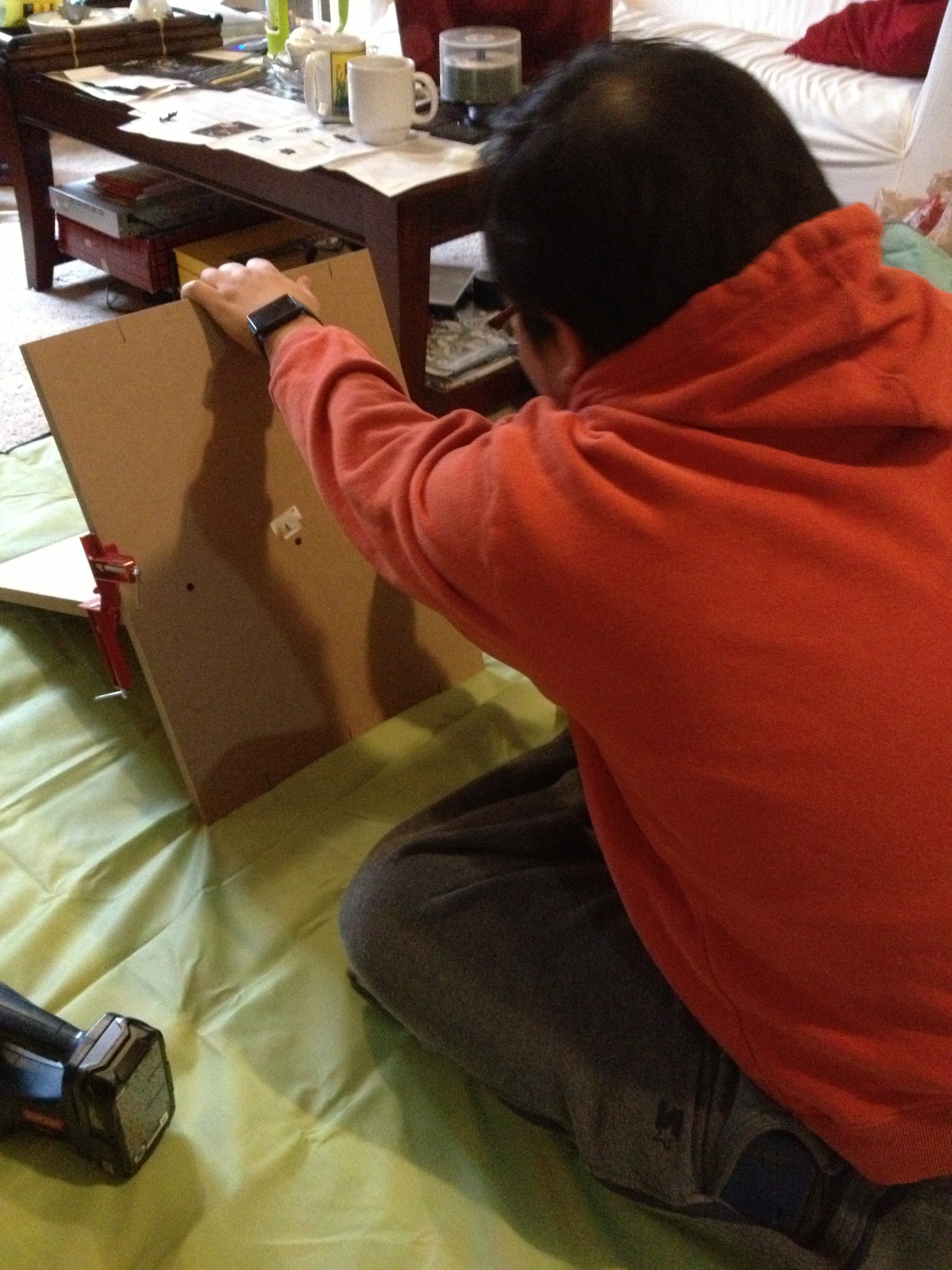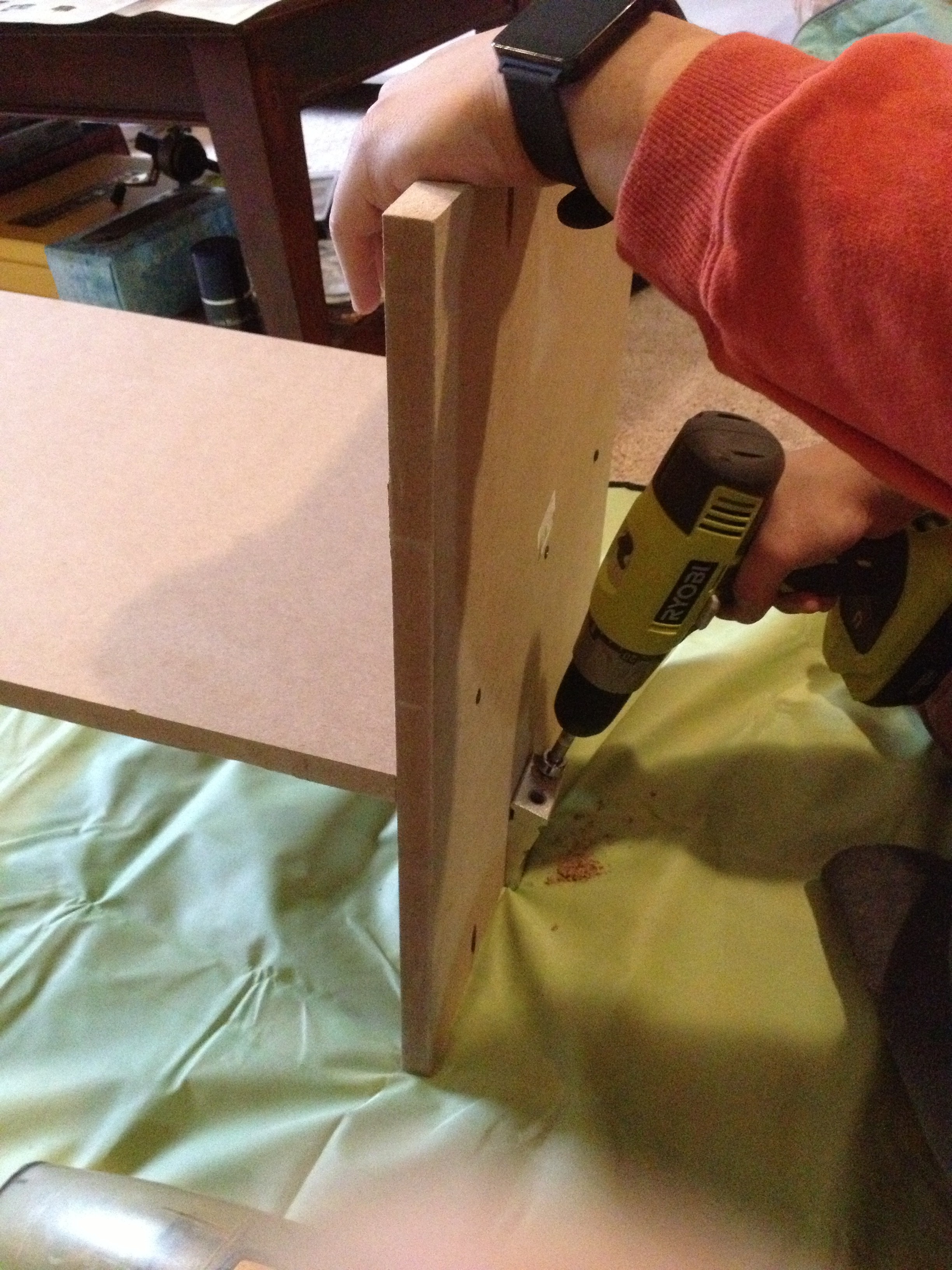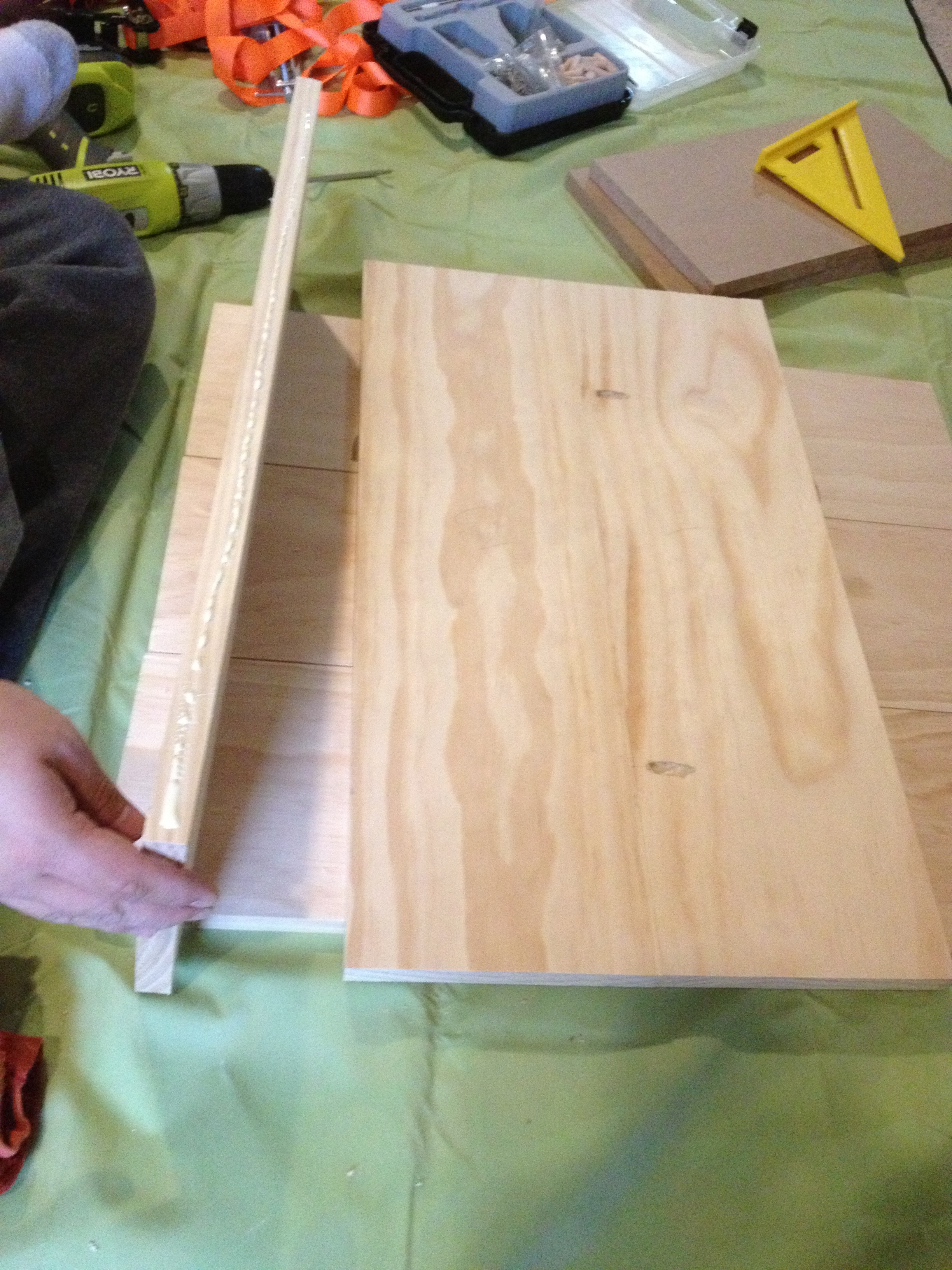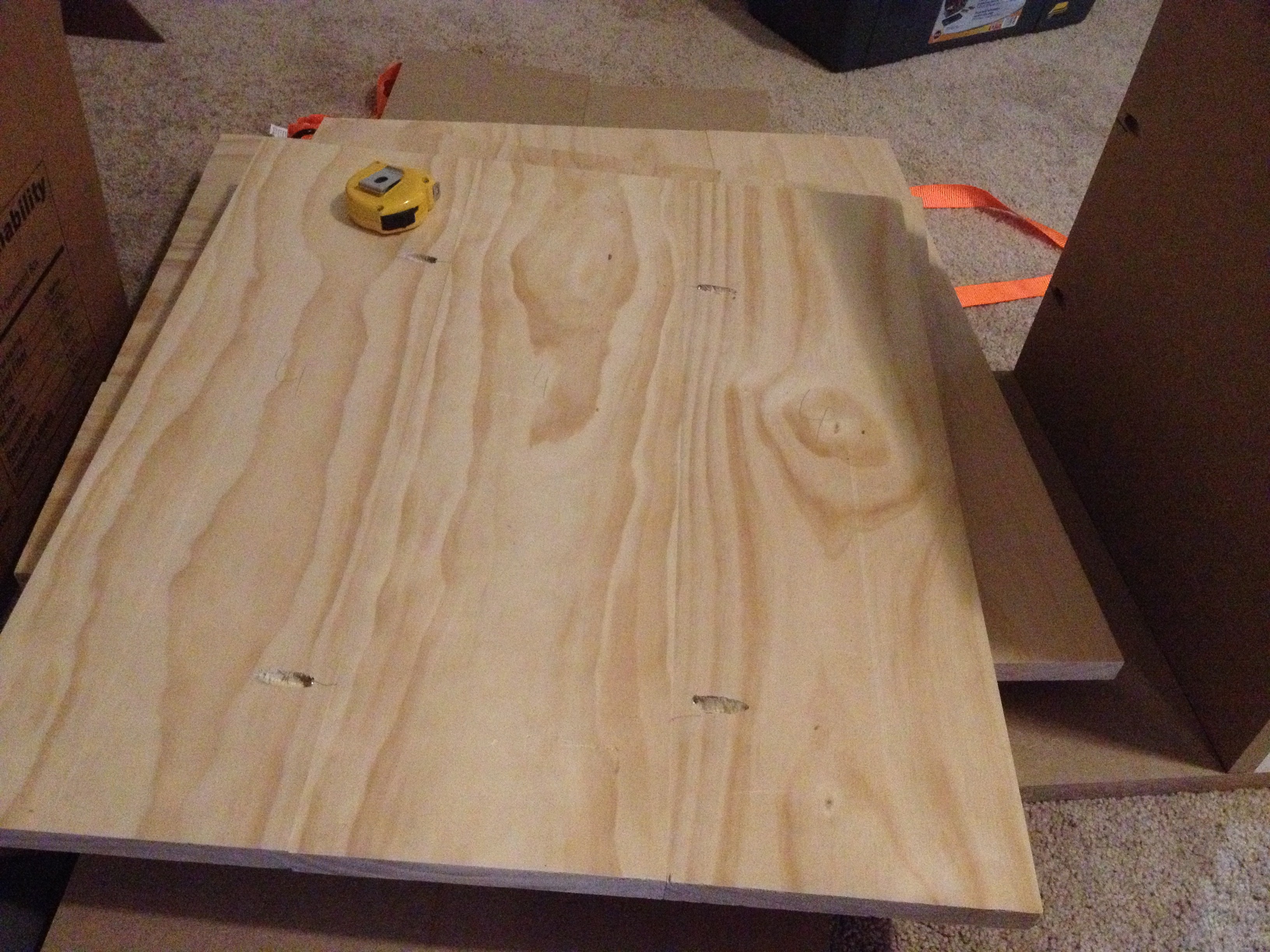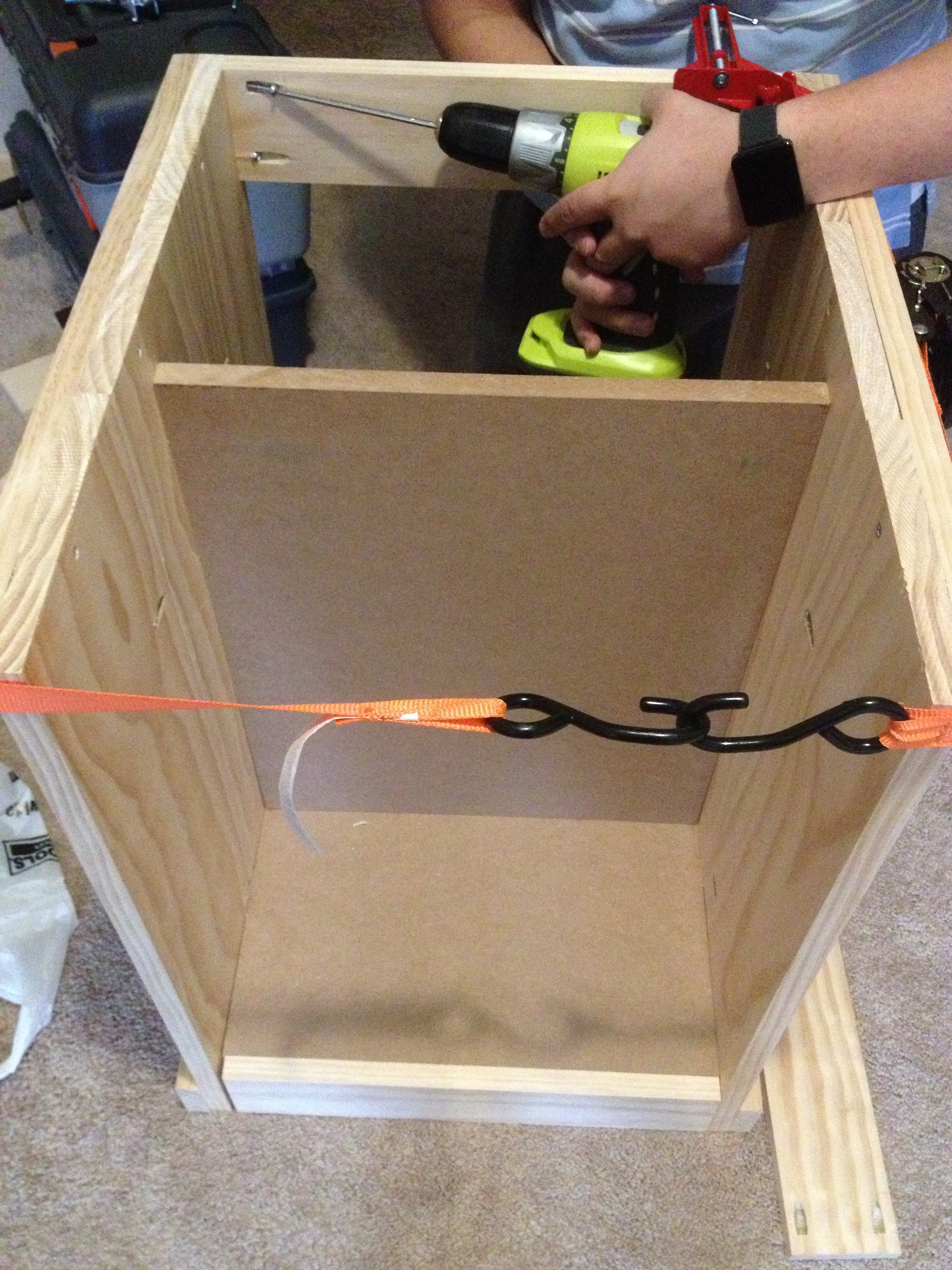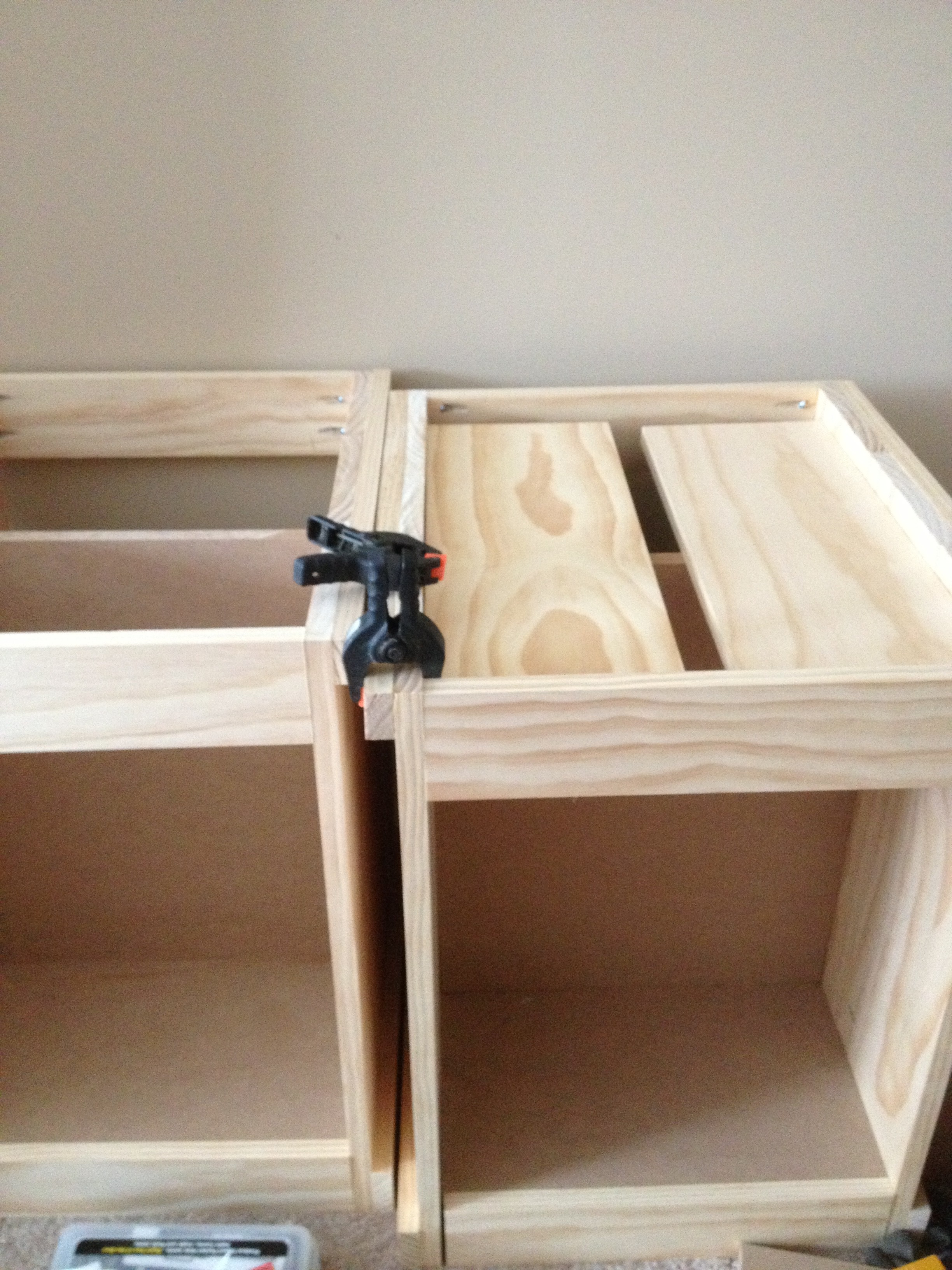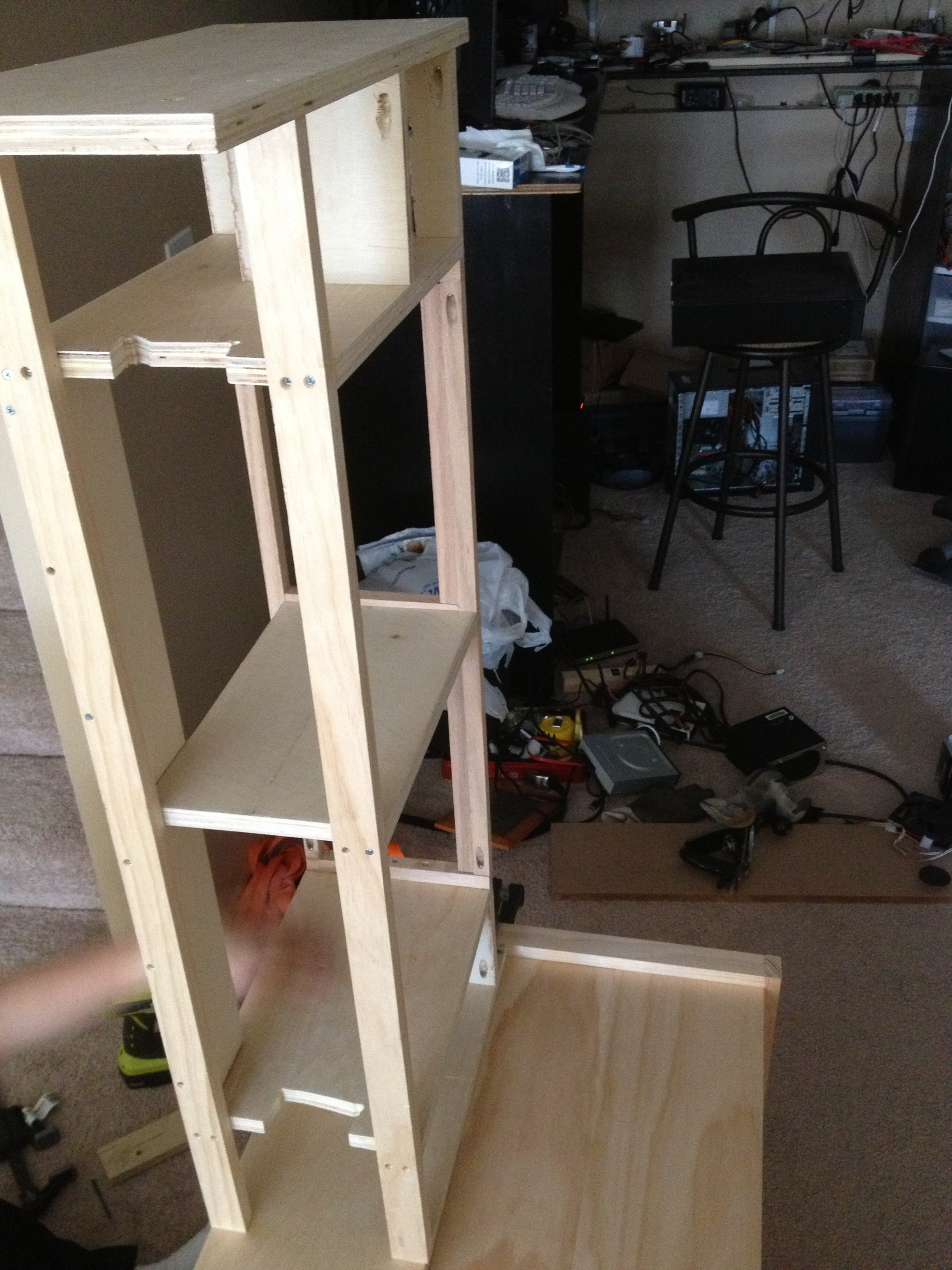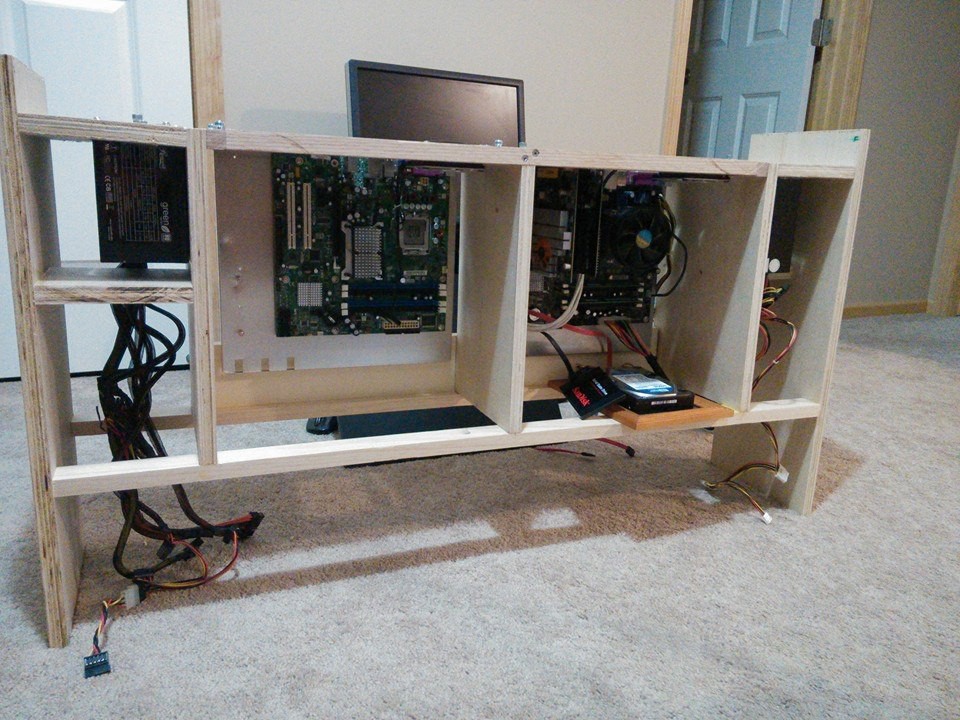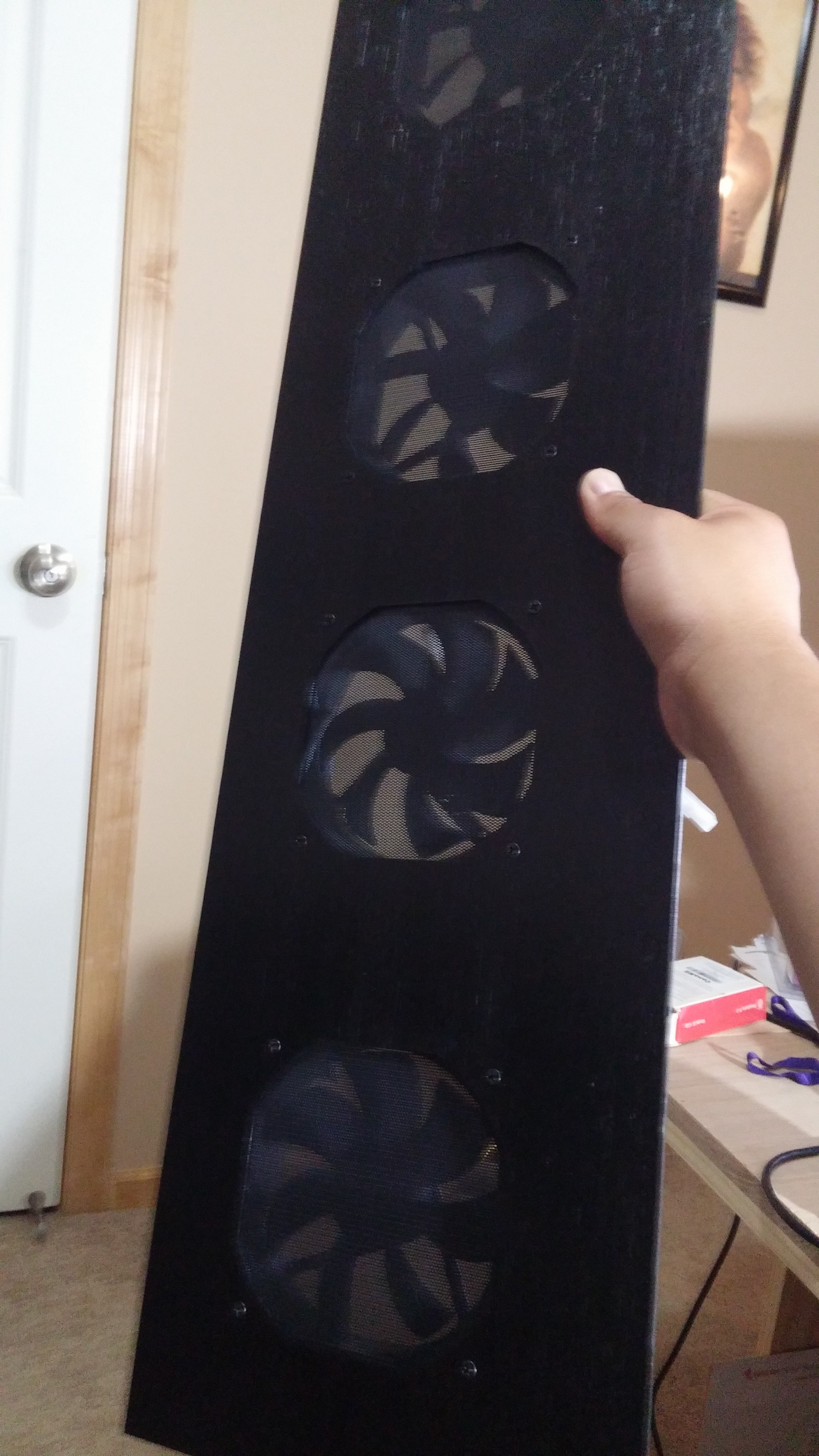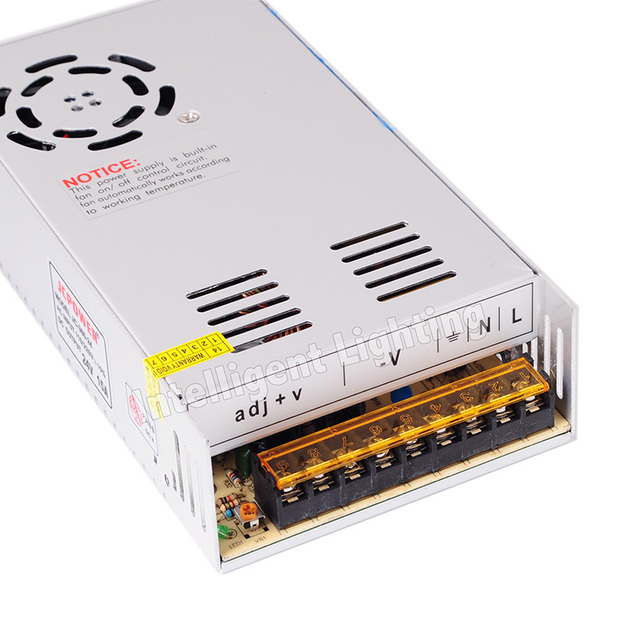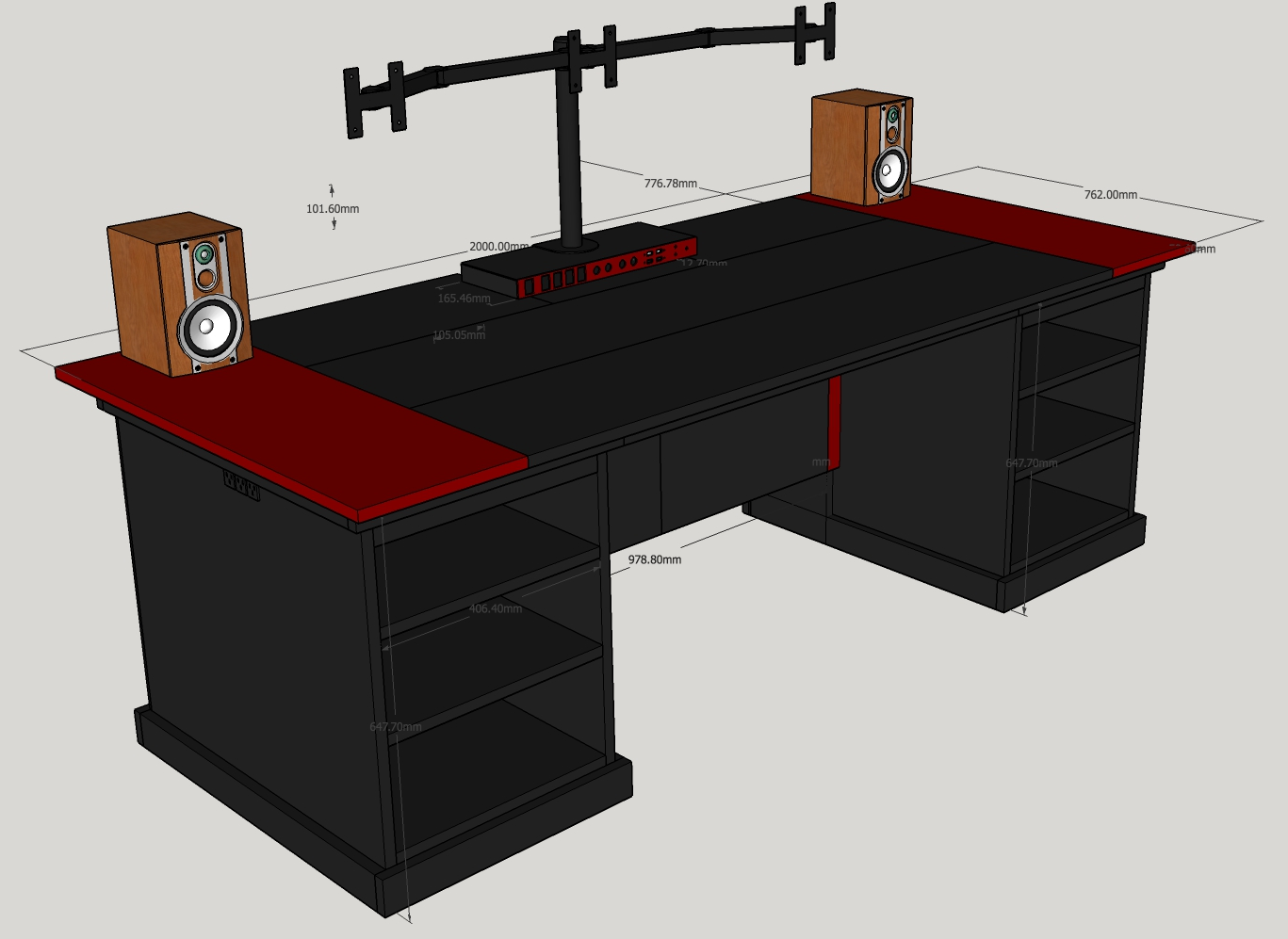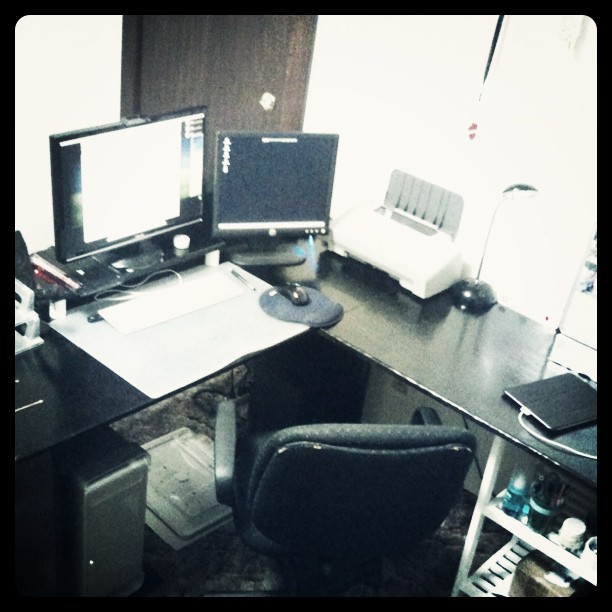-
Cabinet Making
06/12/2016 at 01:47 • 0 commentsOne nice winter day I decided to make some cabinets. These cabinets are used to hide wiring as well as to provide some storage spaces for the desk. In the grand scheme of things, the cabinets are the modular units that makes up the desk. They are not intended to be disassembled any further.
Me screwing the cabinet base and the faux back together.
Drilling some pocket holes...
Gluing pine boards together to get the depth. Boards are also secured using pocket screws.
Three pine boards make a cabinet wall:
Connecting the boards together and joining them with another pine board that is the beam:
Gluing some 1x2s as a make shift molding. The wider boards are there for no reason :P
Test fit with the center piece... success!
-
First Part of Build
03/09/2016 at 06:44 • 0 commentsThe first module in the grand scheme of things... the center module which would house two computers.
This is the panel with 4 120mm case fans and filters which will be installed under the module. The idea is to create an upward air flow which is also where hot air goes... so the system will use less energy to cool down.
-
On Consolidating Power Supplies
03/04/2016 at 17:33 • 0 commentsOur homes are wired to AC (Thanks Nikola).DC is getting traction with renewables. One can argue that, once renewables become our major source of power generation, our houses would be wired for DC. It is just more efficient cutting away AC-DC conversion.
But that's another story.
Today's story focuses on the desk I am building.
I have 3 monitors, two computers, one little amplifier. Plus I want to charge my phone when I am at my desk. Plus I might want to install some fancy LED lights. They all require DC power, but my house is wired AC. So they needed some sort of power supply.
Here's the thing: Monitors these days wanted to be SLIM. Power supplies are the main constraint. Solution? Power supplies are made external. The result is, you ended up with a SLIM and SEXY monitor coupled with a bulky power supply.
Multiply them by 3, plus one more that is powering the amp. What a nightmare trying to cable manage these beasts.
So I came up with an idea to power all things DC with just one power supply. I'll leave the two computer power supplies alone for now. They are complex enough to not to be dealt with.
Here's where I wear my Electrical Engineer hat.
My monitors and the amp takes 24V. So it is easier to get a 24V power supply.
The original power supplies for the monitors and the amp are rated 24V 3A. Adding up the amperages, plus some buffer to have enough juice to power my USB charger, I ended up with a 15A requirement for the supply.
So that's what I got.
The 15A power supply comes with a fan. A fan. That turns. Turning makes noise. Oh boy.
Take a deep breath, cut the cords, splice the internal wires, and connect to the terminals. Before connecting to my monitors and amp, I adjusted the output voltage by turning the potentiometer and measuring the output terminals using a multimeter to make super sure that the supply outputs the right voltage. You don't want to loose any of your precious monitors because you missed the right voltage!
And finally connect the other end of the wires to the monitors. Fire up the power supply and watch the monitors coming to life! Huzzah!
-
The not so final design
02/21/2016 at 03:53 • 0 commentsSo, after a year of tweaking and designing... here is the not-so-final design for the table I am looking to build.
The table consists of 4 parts: two cabinets on each side, connected by the center compartment which houses two computers, and topped by the (very large) table top. I plan to have these 4 parts separable easily for transport.
Wiring should be internal to the table. The only wire going out of the table would be the power cord.
Here is how it would look like:
-
Journey for the perfect desk
01/12/2016 at 03:54 • 0 commentsBackground
During my years in college, I have used my share of desks, from the fold-able picnic tables to kitchen tables to cheap tables geared toward college students and none of them seemed quite right to my needs. As an engineer-to-be at the time, I also believe there is a solution to every problem and would not settle for anything less than perfect. I found the diy community and this is how I started my journey for a perfect desk.
My very first DIY desk is just a long plywood on top of two shelves :). The table top is not secured, it moves around quite a bit.
Few months later I got a few more plywoods, have the staff in the home improvement store cut them to size, painted them, put a few screws in, and butt join them all together. The result? a desk that looks somehow better but still kinda wobbly, especially when I am using an eraser. The whole desk moves with the stuff on top of it, and it is quite scary.
What I like about that desk though, is that it is very easy to transport. Simply unscrew the joints and you are back to just basic plywood boards. This feature helps me quite a lot when I am moving.
After experimenting with different desks (and two of my 'designs'), and now with a job that has some disposable income, as well as after referencing some desk designs that I think is 'cool', I started listing some of the features I would like to see on my 'perfect' desk design.
Features i want my desk to have
- Sturdy.
- Easy to assemble/disassemble.
- Easy to carry/move.
- Have storage spaces.
- Wire management built in. (I.e. NO exposed wires!)
- Consolidated power sources.
- Only one detachable power cord to the wall.
- Charges my gadgets.
- Wide.
- Deep enough to still have spaces for papers/books once the monitor takes some depth away.
- Houses two computers.
- Have switches to control the two computers on the desk top and they have to be within arms reach.
- Quiet, since there will be two computers built into the desk, I would love that the desk would be as quiet as possible so not to annoy me when I am working.
Note about the sturdy and easy to carry requirement. My roommate was once given an office desk which the donor described it as "tornado proof". It didn't disappoint to the description, but surely it's heavy and hard to move around. It eventually ended up in the dumpster during the next move. I loved that desk, but I wished that it could be easily carried around.
Design
Standing on the shoulders of giants, I drew my ideas from these great designs:
Ana White's modular office desk
So I started to design away with SketchUp. It took me about a year to finalize the design. I am definitely not in a hurry!
Die Brücke
The modular, easily disassembled, yet sturdy executive style Command Center Desk
 Yonghan
Yonghan